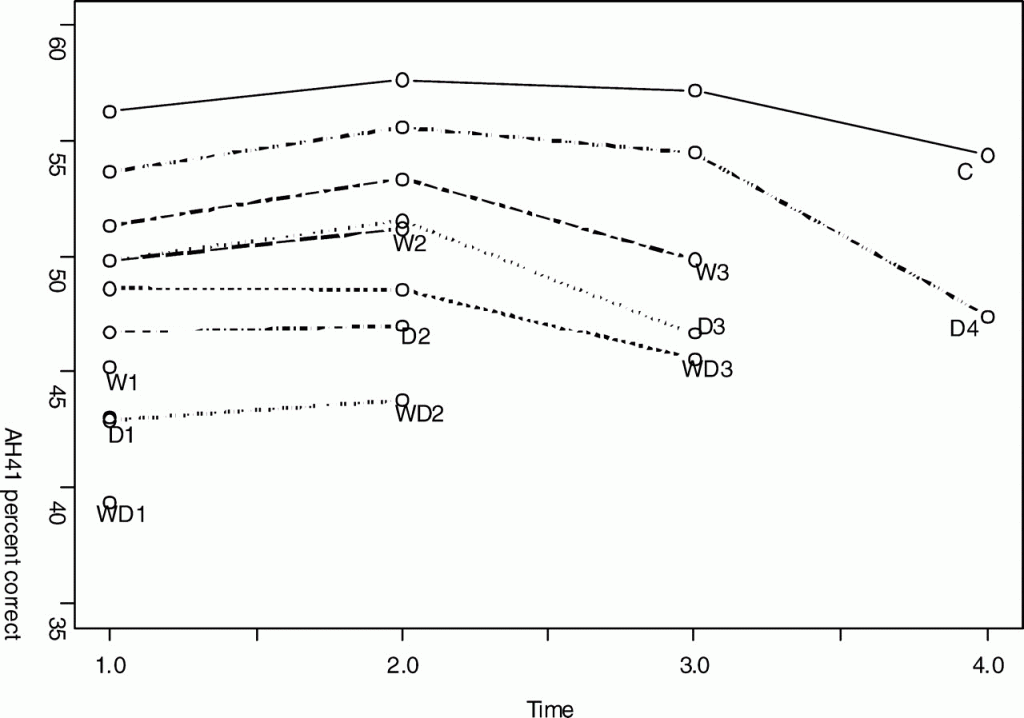
Photo: Public Domain
The most ominous graph in the history of psychology and perhaps of all time was published a few years ago to not much notice. It is shown below. I would like to call attention to its implications now.

Profiles of percentage scores on the Heim AH4-1 test (AH41) of fluid intelligence across testing sessions for survivor (C), death (D), and dropout (W) groups.
There are two different experimental paradigms for determining the effect of age on cognitive ability. The better paradigm is the longitudinal study. In this paradigm, a group of participants is given some test repeatedly throughout their lives and the correlation between age and task performance is computed.
The practical difficulty with this experimental paradigm is that it takes a very long time to complete the study. If one wishes to do more than one experiment in their lifetime, the alternative is the cross-sectional study. A group of participants of different ages are all given the same exam at the same time and again the correlation between age and task performance is computed.
An ability of interest is fluid intelligence, which is the ability to perform a new task for the first time. In cross-sectional studies, fluid intelligence is found to be at its peak for individuals in their 20s and to continuously decline with age so that for all ages, when the performance of people ten years apart in age are compared, the mean for the older individuals is always lower than for the younger individuals.
Over 20 years ago Patrick Rabbitt and his colleagues (Rabbitt, Lunn, & Wong, 2008; Death, Dropout, and Longitudinal Measurements of Cognitive Change in Old Age, Journal of Gerontology: Psychological Sciences, 63B, P271 – P278) began a longitudinal study of fluid intelligence. More than 5,800 individuals of all different ages from Manchester and Newcastle-upon-Tyne were recruited by newspaper advertisements and given the same test of fluid intelligence four times, at five-year intervals, so it was possible to determine how an individual’s performance changed over 15 years.
The results are shown in the accompanying figure. As is necessarily the case for any longitudinal study, some of the initial participants withdrew from the study over the fifteen year period while others died. What was unique to this study, and ominous, was that how well participants performed on the test of fluid intelligence predicted whether they would withdraw from the study and/or die within the next twenty years.
As shown in the figure, the level of performance on the initial test predicted how long a person would participate in the study and, more important, how long they had to live. The poorer the initial level of performance was, the less likely the individual was to be alive and participating in the study twenty years later. Furthermore, it was not the case that performance continuously declined with age. Rather, performance did not decline until an individual was within five years of withdrawing from the study and/or dying. So a decline in performance on the test of fluid intelligence was a leading indicator of future ill health in the next five years, perhaps before the participant was even aware it. It suggests a deep connection between physical and mental health that needs to be explored.
So, by regularly taking a test of fluid intelligence you might be able to be forewarned of your own ill health and possible death within the next five years. Knowing this now, would you want to take this test?
Latest Comments
Have your say!